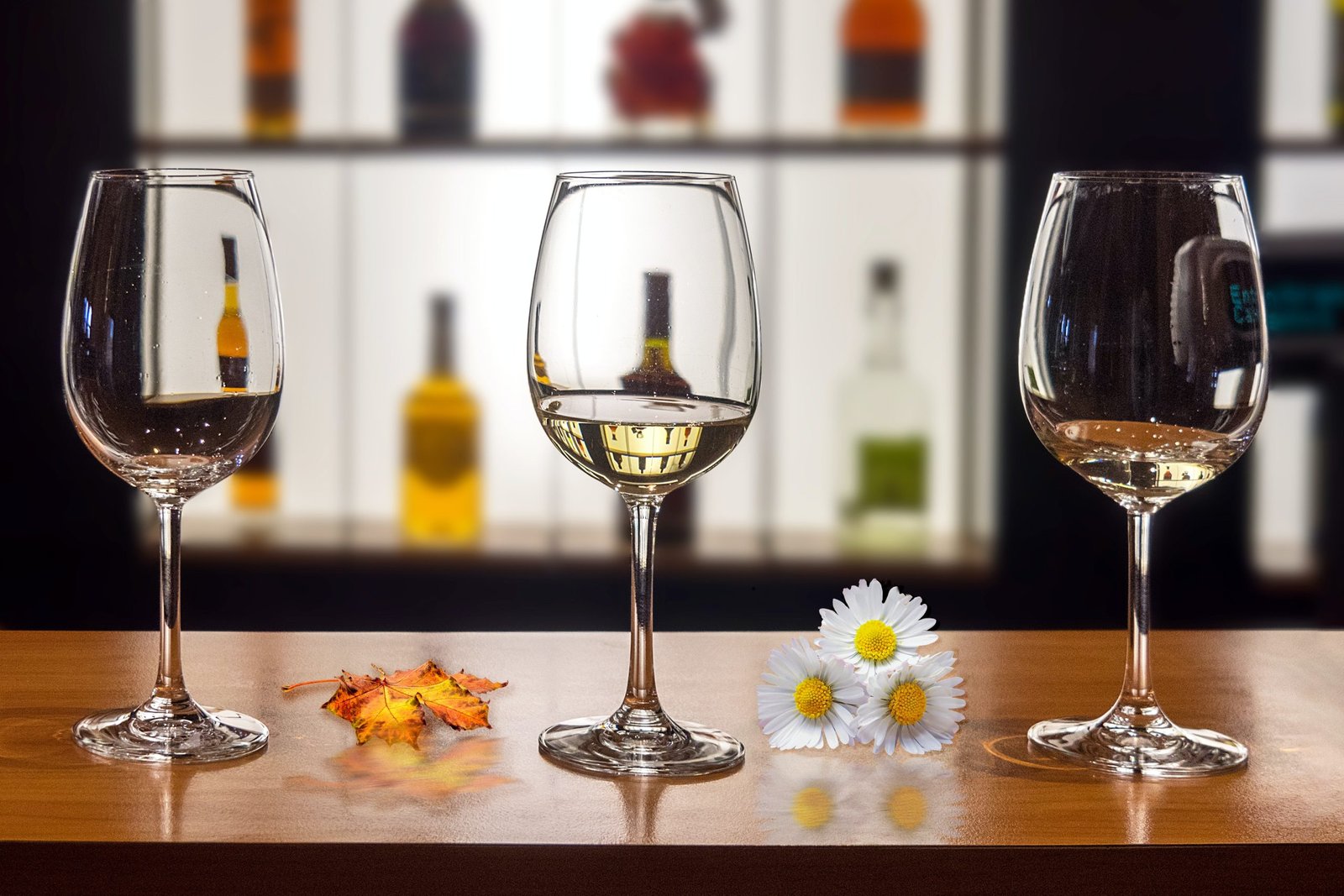An Easy Guide to Wine Pairing

Wine pairing has become an integral part of wine appreciation. It is a fun way to enjoy wine and food together in perfect harmony. Just like food pairing, wine pairing is all about complementing flavors and textures. Unlike food pairing, wine pairing requires no compatibility between the wine’s taste profile and the dish’s ingredients. Instead, wine pairing is largely determined by the strength and acidity of the wine.
When pairing wine with food, you should always try to pair with food that has similar acidity and richness levels as your wine. In this guide, we will cover everything you need to know about wine pairing—from basic rules to advanced techniques. But first, let’s talk about why wine pairing is important and how it works.
Wine Pairing
Today, wine pairing is an essential part of wine-loving culture. It’s no longer just a matter of pairing wine with food to create a perfect pairing, but more of understanding fundamentals of wine pairing and finding the perfect wine match for dishes. To get started, you must first learn the basics of food and wine pairing with the help ofand. You can opt for wine pairing events or read wine pairing books to understand the fundamentals. Additionally, you can find the perfect wine match for your dish by seeking input from experts like a sommelier and food stylist. You can balance food components and wine characteristics to create a great pairing. Remember to select wines with similar acidity levels, sweetness levels, and flavors to complement your dish’s flavor profile.
How to Pair Food and Wine
Start with the basics. Take a moment to consider what foods you enjoy eating and what meals you usually make for yourself. This should help you select wines that complement the food you are serving.
wine pairing is a delicate process of combining food dishes with the perfect wine to enhance the dining experience. In this case, it’s important to consider complementary flavors and a balance between the components of a dish and the characteristics of wine. Additionally, it’s vital to understand what to look for in a recipe in order to make great wine matches. By following these simple steps, wine pairing can become an enjoyable experience for everyone at the table.
Choose a Food and Wine That you Like
When selecting a wine to pair with food, consider the food’s flavor profile and the wine’s acidity. As a general guide, white wines are best with fish and seafood, red wines are best with meaty dishes like red meat and poultry, and sparkling wine is great for light meals. When pairing wine and food, it’s vital to select a wine you would enjoy drinking on its own. So if you pick a wine that’s full-bodied or heavy-on-tannin, you may not enjoy it as much as a wine that’s lighter-on-tannin or fruity-on-tannin.
Another factor to consider when pairing wine and food is the food’s preparation method. If the dish is sauced or smothered in sauce, try pairing a wine with acidity such as white wine or sparkling wine. If the dish calls for brushing or sprinkling herbs or spices on top, choose a white wine with tannin such as chardonnay. When pairing wine and food, consider the food’s acidity level as well; if the dish is high in acid, go for white wine while red wine might be too heavy on the palate.
Finally, use a wine pairing chart to guide your decisions when pairing wine and food. By following these tips, you can vary the pairings without having to resort to alternate wines every time you make a delicious meal.
Why is food and wine pairing important?
– Food and wine pairing is an art that can elevate the culinary experience, making it more memorable for those who partake. This process involves pairing food and wine to maximize the enjoyment of both components of a meal and heighten the dining experience.
– The process of pairing food and wine involves finding complementary flavors to enhance the enjoyment of each component. This helps to create a balanced experience between dish and wine.
– Learning the basics of food and wine pairing can help create a balanced experience between dish and wine. With the right knowledge, one can make great wine matches to dishes they enjoy.
– With proper wine match, one can create unforgettable experiences no matter what cuisine they are into.
What are the 2 basic rules for Wine Pairings?
There are two basic methods of wine pairing: congruent pairings and complementary pairings. Congruent pairings match the flavors of the food and wine, while complementary pairings create a balance between the components of the dish and the characteristics of the wine. When pairing food and wine, consider the flavors you enjoy in the food and the characteristics of the wine to create a balanced pairing that suits your tastes. Additionally, consider the components of the dish and the characteristics of the wine to create a balance between them. This can help to bring out each component’s unique characteristics and make for a tasty pairing.
Think about your favorite foods when creating a pairing. Choose wines with similar flavors to complement those foods and enhance their natural sweetness. Also, consider factors like acidity, tannin, sweetness, taste descriptors, body, mouthfeel, alcohol content and age to complement your pairing.
When creating pairings, think about why you’re pairing food and wine in particular. Are you pairing food with wine because they complement each other or because they complement your meal? Consider what’s special about each dish or wine that appeals to you when creating a pairing.
Flavor Profiles To Consider for Wine Pairings
When pairing wine with food, it’s important to understand the different food flavor profiles. This will help you choose wines that complement your dishes and enhance the flavors of the food. In general, dry red wine is perfect for sweet foods, sparkling wine is perfect for rich foods, white wine is perfect for light, delicate meals, red wine is best for bold meat-based dishes and dessert wines are great when pairing with sweets.
The type of food also plays a role in wine pairing choices. For example, red wine pairs well with spicy foods and bold reds are perfect for pairing with red meat dishes. Additionally, it’s important to consider the acidity level of the dish when making wine pairing decisions. If a dish has high acidity levels, such as acidic fruits or acid-filled vegetables, then a white wine would be a good choice.
Rosé wine can also be a safe option when in doubt because of its high acidity levels and tannin content. These characteristics make it ideal for pairing with meals that have high acidic content or red meat dishes. Also, advanced food and wine pairing tips are helpful for experienced tasters as they can guide them through pairing decisions and enhance their experience.
Methods of Wine Pairing
– In wine pairing, congruent pairings are when two flavors are perfect for each other. The food and wine complement each other in terms of acidity, sweetness, and bitterness. This is one method of wine pairing.
– Congruent pairing involves matching the acidity of the food with acid in wine. For instance, pairing red wine with red meat is a congruent pairing because red meat is high in acid, and red wine provides it.
– In contrast to congruent pairing, complementary pairing involves matching the acidity, sweetness, and bitterness of wine with those of food. It can be done with white wine and fish or white wine and poultry. Both ingredients complement each other in terms of acidity.
– Another method of wine pairing is tacking the wine’s characteristics to the dish’s characteristics. For example, white wine goes well with white meat or seafood dishes as it highlights its freshness and acidity. Red wine enhances red meat dishes by highlighting its sweetness and tannin.
– Wine pairing is an art that requires expertise and practice to perfect. Sommeliers use various strategies to create incredible pairings at home and can guide you on how to best match your dish and wine for maximum enjoyment.
Congruent Wine Pairings
Wine and food pairings are essential to creating a delicious and balanced meal. To create congruent pairings, it is important that the wine be complimentary to the flavors of the food. This can be done by choosing red wine for meat and pasta or white wine for seafood and salads. When pairing wine and food, it is best to choose those that share several compounds or flavors. A great way to ensure congruent pairing is by taking note of food labels; they often will list the wine’s acidity, Brix level, and other characteristics that can help determine whether it will complement the dish. Red wines are a great choice for creating congruent pairings due to their diverse aromas and flavors.
Contrasting Wine Pairings
A good pairing dish is key to creating the best wine pairing experience. To really bring out the best in your wine, you’ll want to pair it with a complementary dish. Common contrasting pairings include sweet white wine with a spicy dish or white wine with a salty dish. For example, you can complement a sauvignon blanc with spicy tuna or match a chardonnay with silky risotto. Red wine is often the best choice for pairing with rich dishes like meat dishes and spicy foods, so you might want to try pairing your wine with merlot or cabernet sauvignon.
Other popular contrasting wines include chardonnay, pinot grigio, and rosé. These wines are great choices for balancing out flavors in salads and light pasta dishes. In general, it’s important to experiment and find the best pairing for your particular dish and palate.
Pinot Noir: Pair with Earthy Flavors
Pinot Noir is a light-bodied red wine with a deep, savory flavor, perfect for pairing with earthy dishes like mushrooms and lentils. This wine is best enjoyed with fatty fish like salmon, as it goes well with fatty foods. For an even more interesting pairing, try pairing pinot grigio with spicy dishes like barbeque and grilled meats. Other light seafood dishes also complement pinot grigio well.
Pinot grigio is a white wine that pairs well with light seafood dishes. It has pleasant acidity and a clean finish. It is best enjoyed with white meat dishes, such as chicken and white fish, as it blends well with the acidity of the dish. Besides pinot grigio, other red wines are also perfect wine pairings with seafood. Try chardonnay or cabernet sauvignon for their fruit-forward flavors and acidity.
Chardonnay: Great with Fatty Fish or Fish in a Rich Sauce
If you’re looking for white wine that can complement a seafood dish, you should consider chardonnay. This silky white wine goes great with fatty fish and seafood in rich sauces.
Rich white wines, such as chardonnay, go great with soft cheeses, rich fish, and white meats. For a white wine not sweet, dry whites such as pinot grigio and sauvignon blanc are best pairing with vegetables and fish. These fuller-bodied whites can complement the richness of salmon and also work well with leaner meats like pork loin or chicken.
If you’re new to wine pairing, it’s important to note the difference between white wine and red wine. White wine is made from grapes that are harvested earlier than red wine grapes. This results in a sweeter flavor profile. Also, white wine is generally less acidic than red wine (it’s served at a slightly warmer temperature). So if you’re new to wine pairing, try chardonnay as your starting point and add other reds as you become more comfortable with the pairing process.
Champagne: Perfect with Anything Salty
Sparkling wines like brut Champagne and Spanish cava have a faint touch of sweetness that make them extra-refreshing when paired with salty foods. Serve sparkling wine with potato chips for a delicious pairing, or try pairing it with salty snacks such as pretzels or nuts. Try pairing champagne with other acidity-rich foods such as white meat dishes, fresh seafood, and acidic fruits. Sparkling wine also cuts through the richness and oil in fried dishes, making it a great complement for other light meals. If you’re cooking with cheese, try pairing it with champagne for a super-sexy pairing that will leave your taste buds tingling. You can also enjoy a cheesy risotto or chicken alfredo dish with sparkling wine as they both are perfect examples of creamy, buttery sauces.
A note on safety: be sure to only drink sparkling wine that has been certified as safe to consume by the government’s Food Standards Agency (FSA). Additionally, be sure to follow any specific wine pairing guidelines for the dish you are cooking, as each dish requires different wine pairings.
Cabrnet Sauvignon: Fabulous with Juicy Red Meat
– Cabernet Sauvignon is a perfect wine pairing partner for red meat due to its bold tannins. A classic red wine, this wine delivers tasting notes of chocolate, coffee, and darker fruits like prunes and plums. Additionally, it has complex red-fruit aromas and flavors that complement red meat well. This wine is great for pairing with ribeye steak, New York strip steak, or filet mignon.
– Cabernet Sauvignon is popular because of its bold flavors and bouquet. It can be enjoyed on its own as well as in pairing with other food items. You can have cabernet sauvignon for brunch, barbeque chicken or just about any kind of spicy dish.
– Cabernet sauvignon has a hardy tannin structure that enhances the mouthfeel of red meat dishes without overwhelming them. As a result, you can enjoy red meat experiences to the fullest.
Pinot Grigio: Pairs with Light Fish Dishes
Pinot grigio is a delicate white wine that pairs well with light seafood dishes. Some other white wines that can be paired with light fish dishes include Arneis from Italy, Chablis from France, and Vinho Verde from Portugal. When pairing wine with fish, consider the type of fish and the sauce or seasoning. For example, white fish like sole or flounder should be paired with white wines such as sauvignon blanc or pinot grigio because these wines complement the acidity of the fish meat nicely. Alternatively, red wine varieties like cabernet sauvignon or chardonnay complement red fish such as salmon nicely.
When pairing wine with fish on a dish, consider the dish’s acidity level and ingredient list for best results. Also, it’s important to note that white wine should not be the only drink offered at a wine pairing meal as the acidity level of red wine can complement food more effectively than white wine does.
Frequently Asked Questions
How do you pair wine properly?
Pairing wine properly requires a bit of knowledge and exploration. First, you need to understand the qualities of different wines and cheeses in terms of acidity, tannin, sweetness, richness, saltiness, and so on. With this knowledge in hand, it is easier to make pairing choices that will complement each other.
Next, it’s important to think about the food you enjoy, and your relationship with the food before pairing it with wine. For example, if your favorite food dish is Italian cuisine, then pairing red wine is likely to be more complementary than white wine.
When pairing wine and cheese, you can also take notes from local experts such as sommeliers and food stylists who know what pairs best. They can guide you through pairing wine and cheese for a perfect charcuterie board or wine tasting evening. Keep in mind that wine and cheese pairings can make or break a wine-tasting experience!
What is the best way to pair wine with food?
Finding the perfect wine pairing to complement food can be a tricky task. To pair wine with food effectively, you need to consider the flavor of the food and look for complementary flavors in wine that will bring out the best in both components.
Start by thinking about the types of meals you enjoy and then find a wine that pairs with those flavors. For instance, light white wines are great accompaniments to white meat dishes or seafood, and red wines generally work best with red meat or tomato-based dishes such as pastas. When pairing wine with food, consider the acidity, sweetness and body of both wine and food, and look for flavors that complement each other.
Aromatic white wines complement spicy foods while red wine is great for pairing with bold-flavored dishes. If you’re pairing wine with cheese dishes, try white wine for soft cheeses and red wine for hard cheeses. However, it’s best to experiment with both pairing options to find out what suits your taste best! By tastefully pairing food and wine, you can truly elevate your dining experience.
Conclusion
The pairing of food and wine is an art that takes practice and experimentation. These tips provide a solid foundation for pairing wine with food, but they are by no means exhaustive. Keep practicing pairing food with wine, and you’ll get better at it over time. And if you ever need help pairing wine with food, just ask your friends for suggestions. They will be happy to help!



